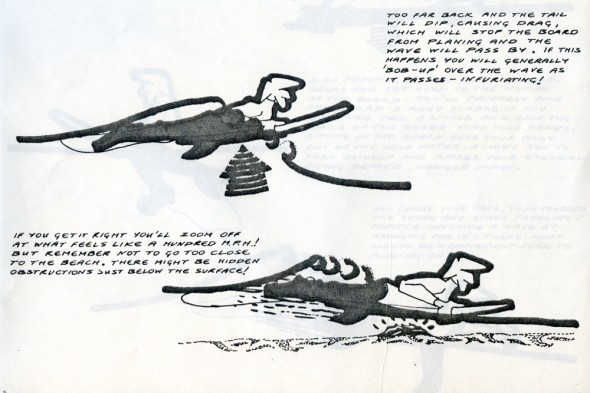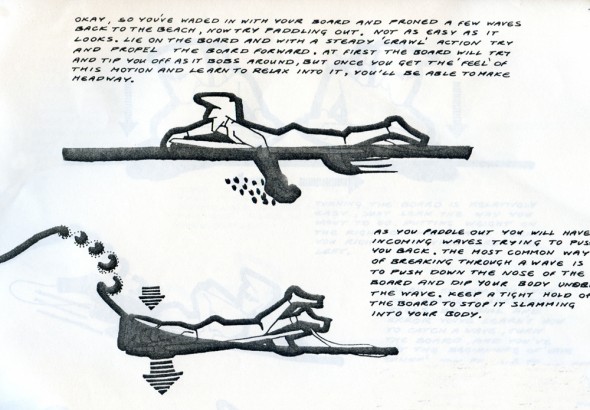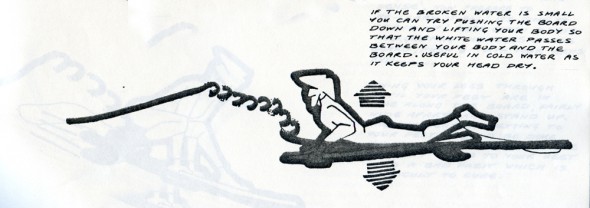I have been very kindly lent the IOW Surf Club’s 1983 guide to ‘Starting Surfing’ by Keith Williams. The guide was put together by Dave Phillips and Rog Butler with cover by Clive Richardson.
Part 1: Isle of Wight Surf Club Guide – Learning to Surf
Learning to Surf
There is only one way to learn to surf and that’s to do it for yourself! But there are various stages that most people find it easier to go through when learning.
Fistly wade out with your board until about chest deep in water. Stand on the bottom, turn to face the shore. and wait for a wave to approach you. Broken waves are generally easier to catch so wait for the ‘Soup’ (White Water) to almost reach you and then push-off with your legs and pull yourself onto the board in a prone position.
Positioning yourself correctly on the board is important. Too far forward and the nose of the board will dip underwater and probably keep going down bringing your ride to an abrupt end! This is called ‘Purling’.
Too far back and the tail will dip, causing drag, which will stop the board from planing and the wave will pass by. If this happens you will generally ‘Bob-up’ over the wave as it passes – infuriating!
If you get it right you’ll zoom off at what feels like a hundred M.P.H. But remember not to go too close to the beach. There might be hidden obstructions just below the surface!
Okay, so you’ve waded in with your board and proned a few waves back to the beach, now try paddling out. Not as easy as it looks. Lie on the board and with a steady ‘crawl’ action try and propel the board forward, at first the board will try and tip you off as it bobs around, but once you get the feel of this motion and learn to relax into it, you’ll be able to make headway.
As you paddle out you will have incoming waves trying to push you back. The most common way of breaking through a wave is to push down the nose of the board and dip your body under the wave. Keep a tight hold of the board to stop it slamming into your body.
If the broken water is small you can try pushing the board down and lifting your body so that the white water passes between your body and the board. Useful in cold water as it keeps your head dry.
Also practice sitting on the board. Relax and get used to the motion of the board. You’ll probably find the board is more stable if you sink the tail a little and grip the rails of the board with your hands. Sitting on your board gets your body out of the cold water, allows you to turn quickly and raises your eye level giving better, longer vision.
Now choose your wave, turn towards the shore and start paddling. Practice catching a wave by paddling for it. There won’t always be a convenient rock to push-off on!







